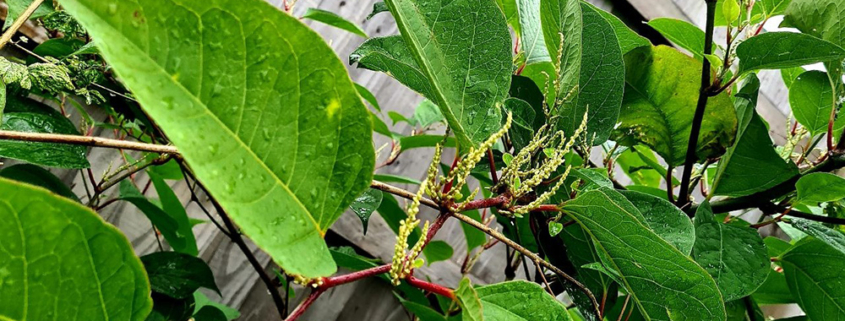Trade body appeal to tackle invasive plants in autumn
A national trade body is urging horticulturists and gardening professionals to help curb the spread of invasive plants as part of their autumn maintenance regime.
Experts at the Property Care Association (PCA) have produced a series of tips to help contain a range of non-native weeds and prevent their potentially damaging spread.

Trade body appeal to tackle invasive plants in autumn
The advice is part of ongoing work from the PCA to raise awareness of the issue.
Daniel Docking, the Property Care Association’s Invasive Weed Control Group Technical Manager, said: “Invasive plants have significant impact to the environment and the economy, but there is much that gardeners can do now to help in this area in autumn.
“Management is key and some simple actions can make a valuable contribution towards this.”
Guidance from the PCA includes:
Annual plants, with seeds dispersed by wind e.g. Himalayan balsam.
Most plants will already have dropped their seeds by now but where at all possible try to remove seed heads by dead-heading before this happens. It’s important not to put the dead heads on the compost heap.
Seeds present in the soil will germinate in the spring but try to remove these by pulling/hoeing. Alternatively, for those wanting to enjoy the flowers, keep the dead-heading going for a few seasons and the number of plants should decrease dramatically over time, as the seed bank in the soil diminishes.
Perennial (woody shrubs, such as cotoneaster, Japanese rose).
These plants can be kept in check by pruning and thinning and this will often do much to remove seeds and fruits that can be dispersed by animal vectors. It may seem a bit perverse to deny wild birds a readily available food source for the winter months but the potential harm these plants can cause in the wild should not be underestimated.
Perennial plants that spread by underground rhizomes, stolons or bulbs e.g. Three-cornered garlic, Montbretia, Variegated yellow archangel.
Each year these plants should be lifted and thinned taking great care to sieve the soil to remove excess bulbils etc. The main challenge is to avoid unintended dispersal outside the garden through the disposal or transfer of soil which still contains the bulbs and root fragments or, in the case of Variegated yellow archangel, stems and stolons which can self-propagate.
Perennial plants; seeds dispersed by wind e.g. Buddleia.
Strictly speaking Buddleia is not a ‘Schedule 9’ plant nevertheless it is non-native and causes both ecological displacement and can affect buildings and built structures. Seed dispersal can be limited by removing seeds heads in the autumn (bagged and placed in the correct bin) and mature plants can be pruned heavily each winter. If complete removal is needed, professional advice should be sought to cut the plant down to the ground and a specialist, licensed tree stump removal product used.
Be aware of Rhododendron ponticum.
The root structure of the ponticum variety, and its ability to seed abundantly, have led to it becoming a species of concern for the PCA and conservation groups, due to its rapid spread. Not all species of Rhododendron are invasive, but the ponticum species can produce thousands of seeds every year. It was widely planted by the Victorians, but this pretty plant, with dramatic pink and purple blooms, is now impacting on our wild spaces, out shading any other woodland floor plant and using a process called allelopathy, which renders the soil toxic to the roots of other plants.
Seek advice for Japanese knotweed
Where Japanese knotweed is present, gardeners and horticulturists should seek specialist advice at the earliest possible stage.
Too often, we see ineffective control due to professional products being used against product label restrictions, which caused continual regrowth.
The PCA always recommends seeking an expert survey of the site to confirm the presence of an invasive plant, especially if Japanese knotweed is suspected. If suspicions are correct, work with a qualified PCA member to eradicate it.
More information
To help horticulturists and gardeners make informed decisions, the PCA also has a book ‘Practical Management of Invasive Non-Native Weeds In Britain and Ireland’ offering detailed insight into 38 plant species individually.
The vast majority of the plants featured derive almost exclusively from species listed in Schedule 9 of the Wildlife and Countryside Act and others of concern to the European Union in the EU Invasive Alien Species Regulation 2014.
More details at https://www.property-care.org/professionals/invasive-weed-control/manual-management-invasive-weeds/
For the latest industry news visit landscapingmatters.co.uk/news
Get all of the big headlines, pictures, opinions and videos on stories that matter to you.
Follow us on Twitter and Instagram for fun, fresh and engaging content.
You can also find us on Facebook for more of your must-see news, features, videos and pictures from Landscaping Matters




